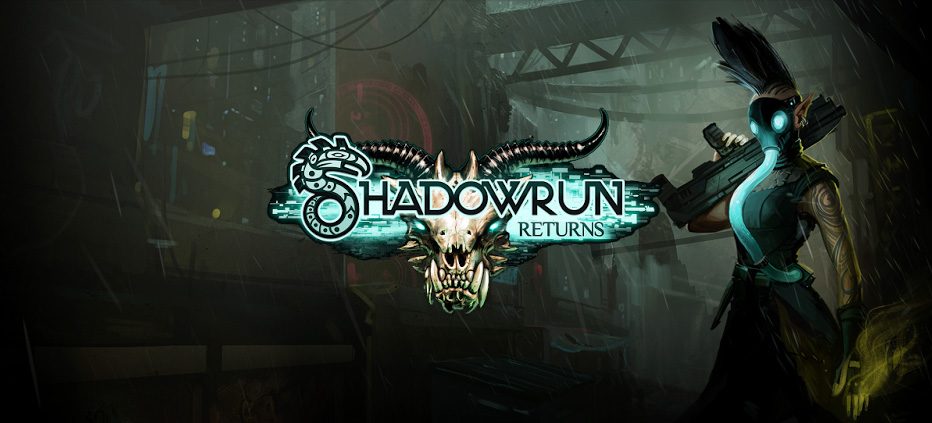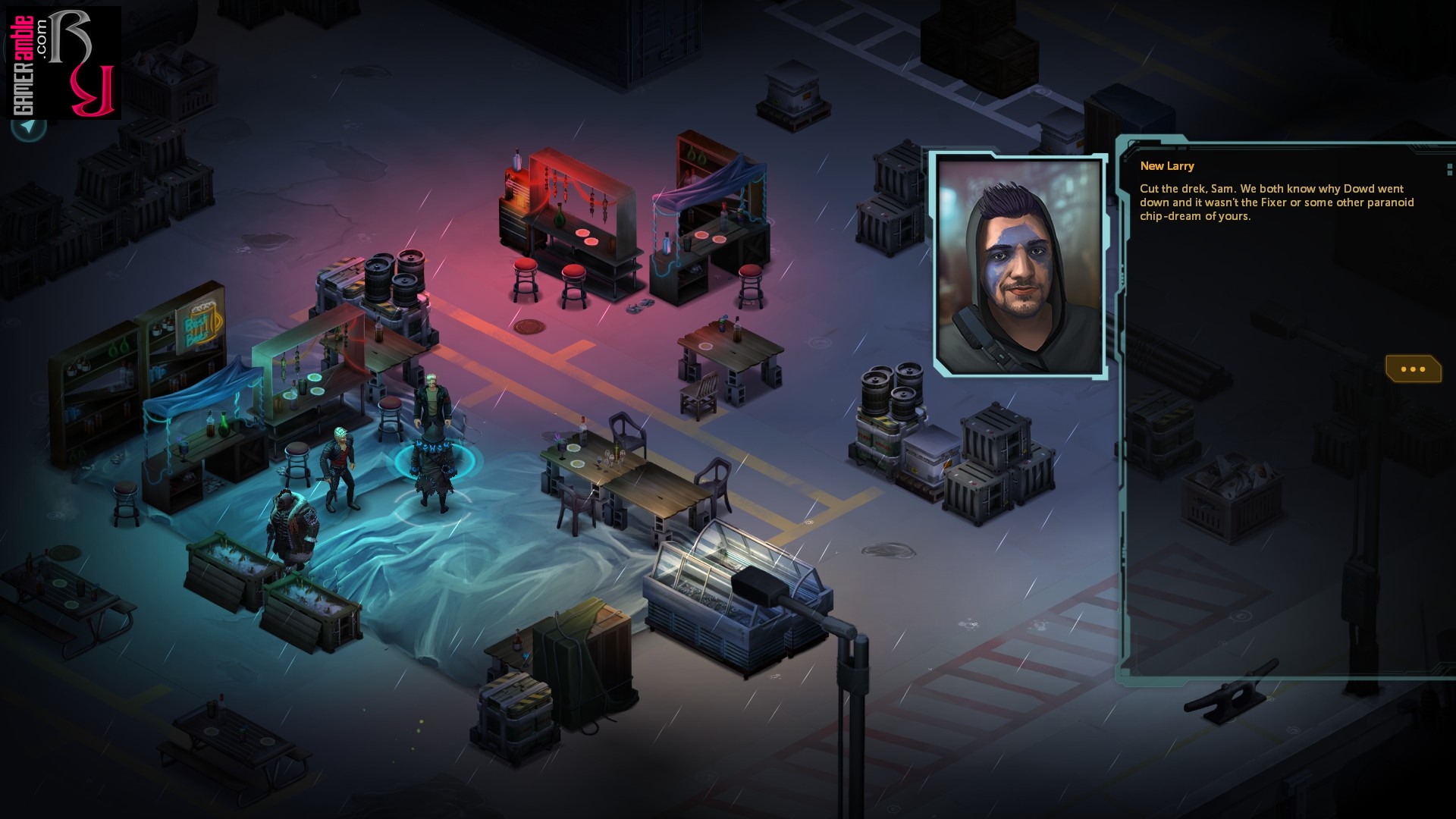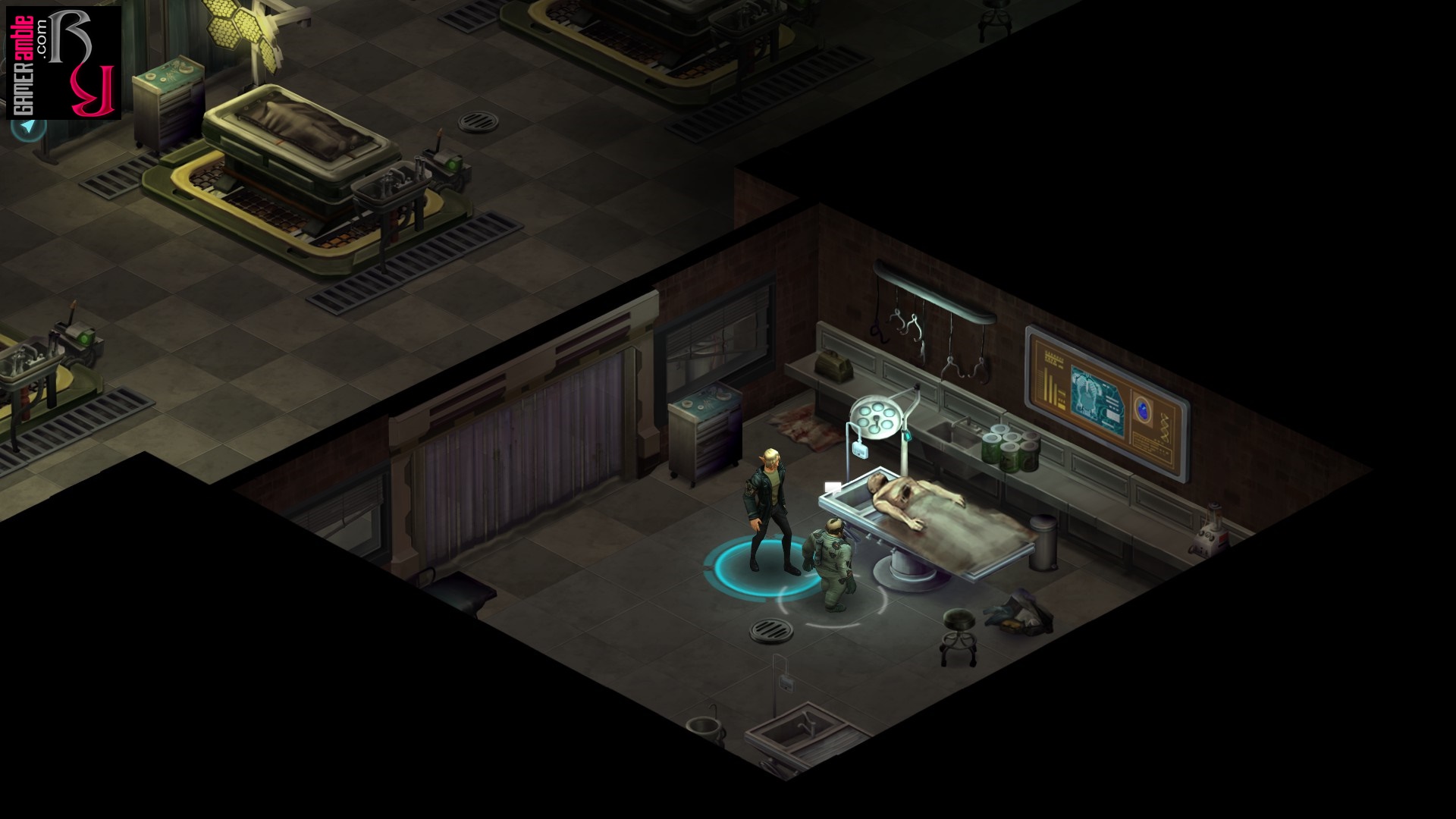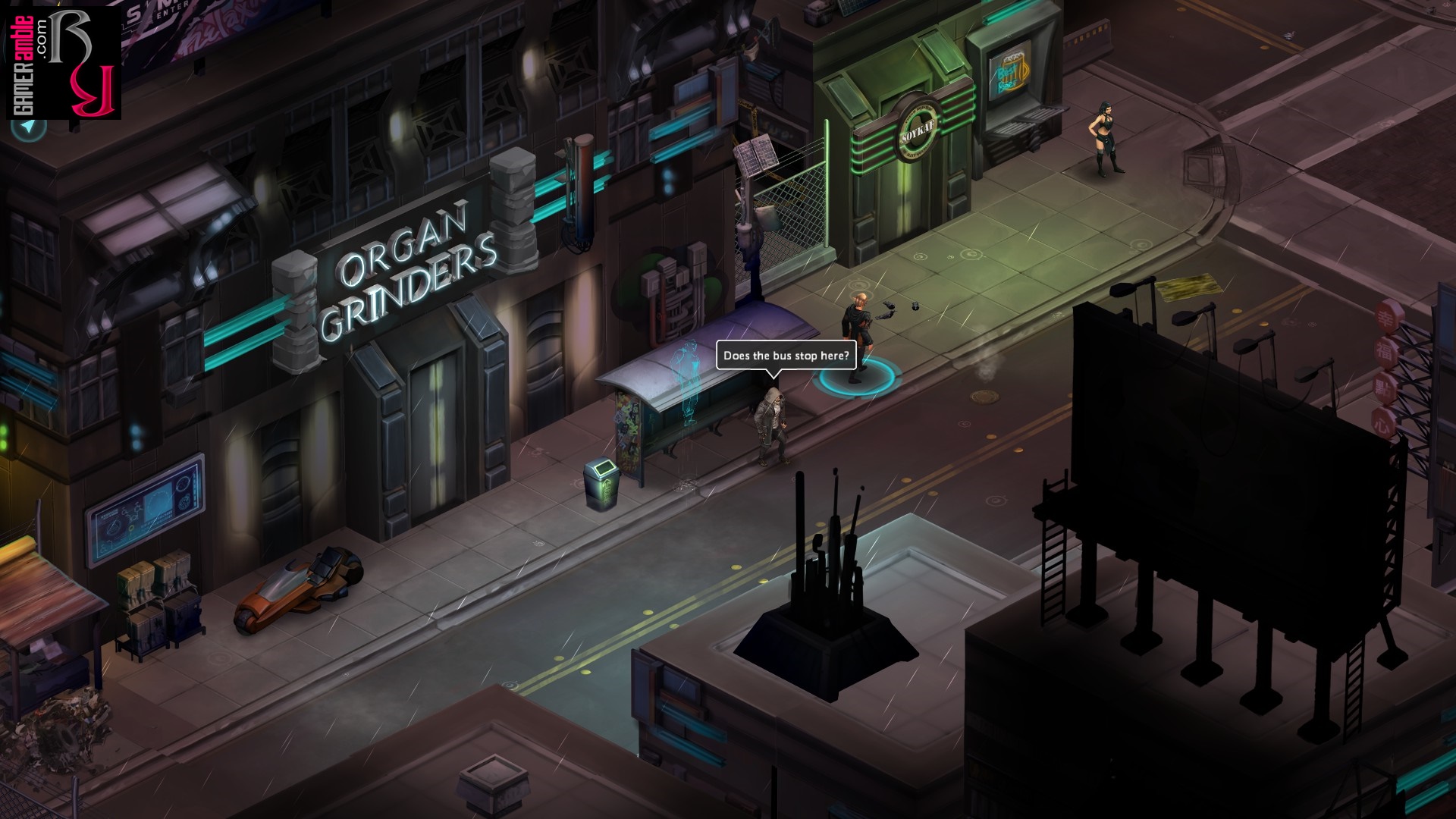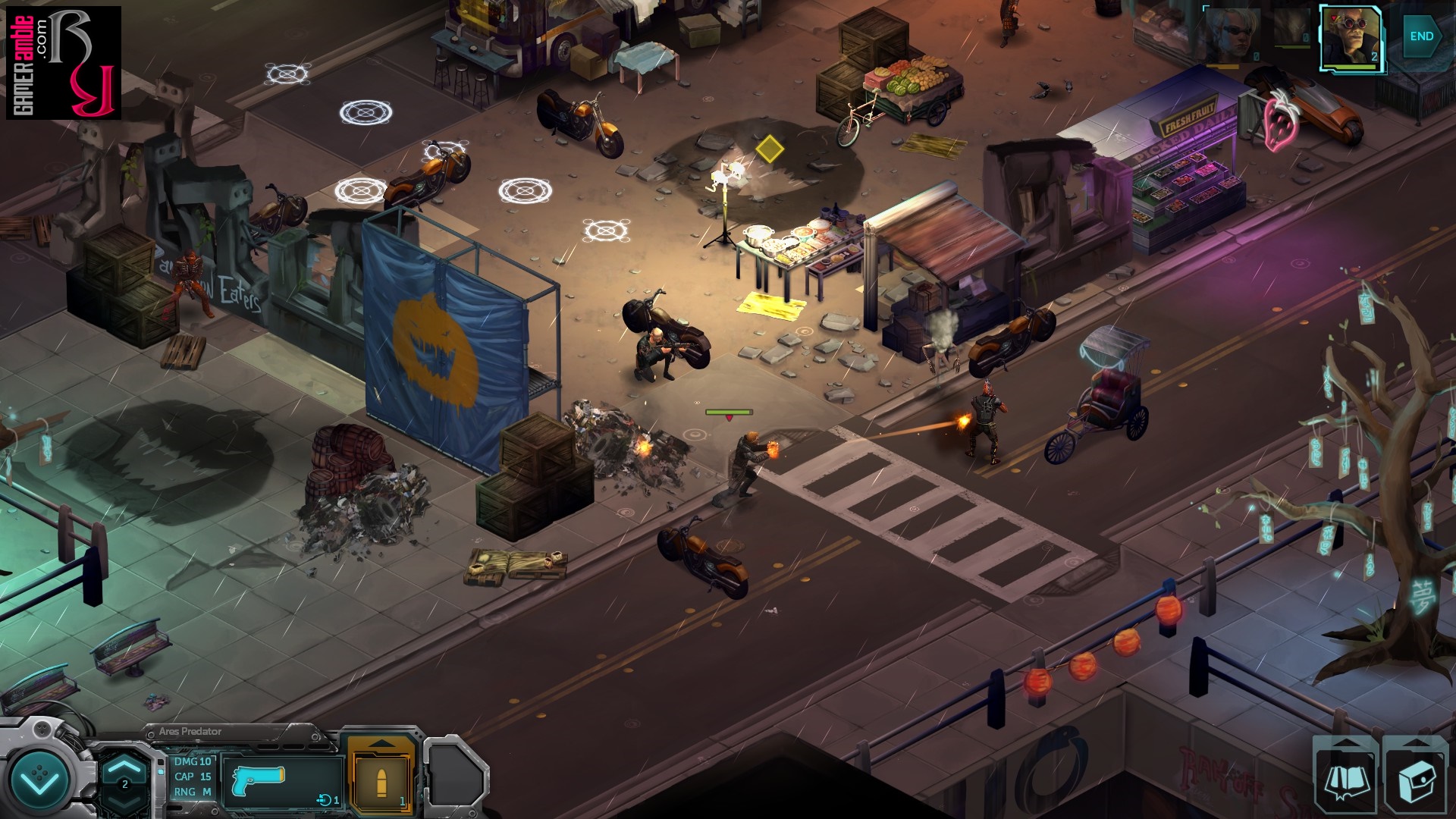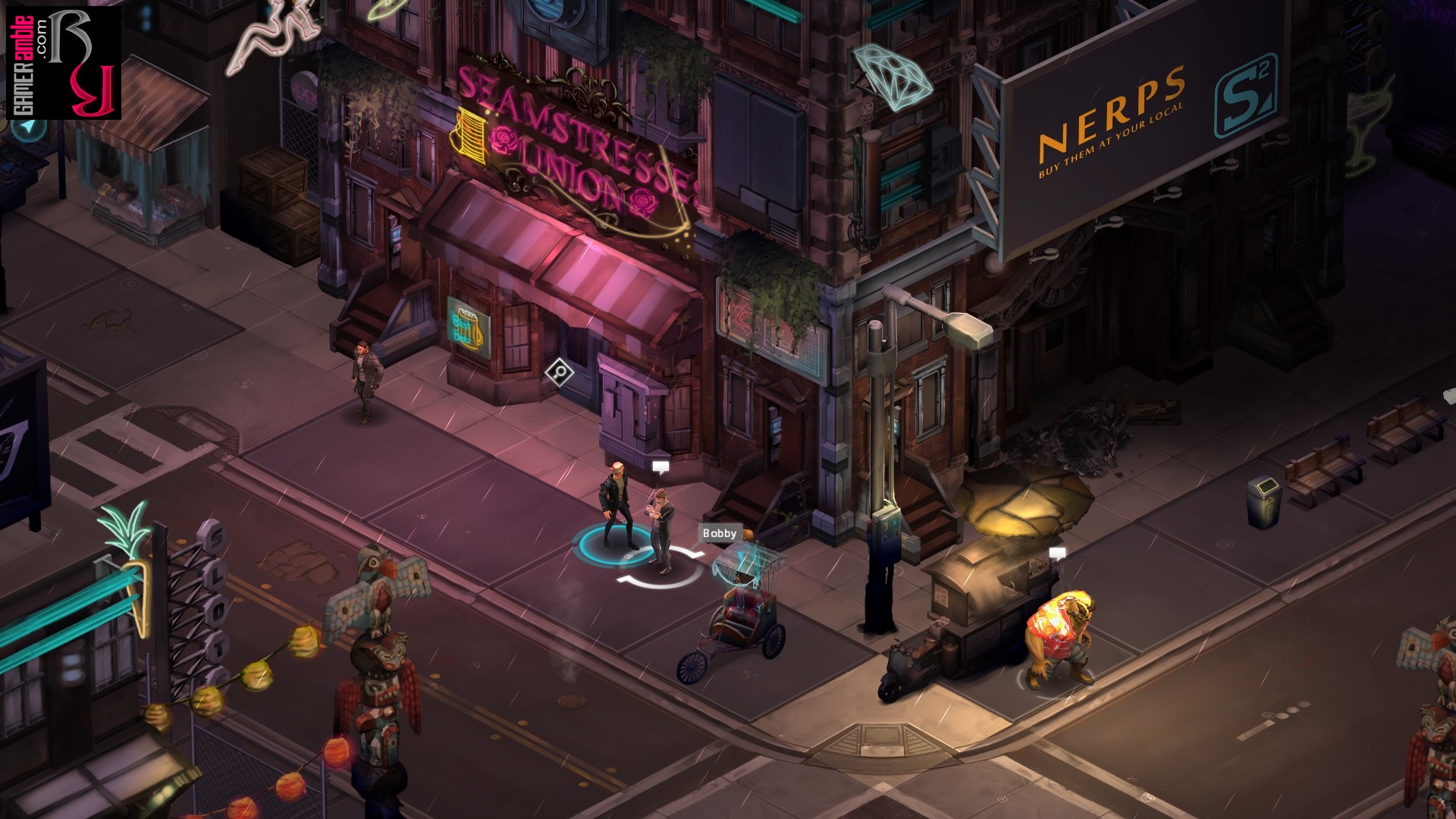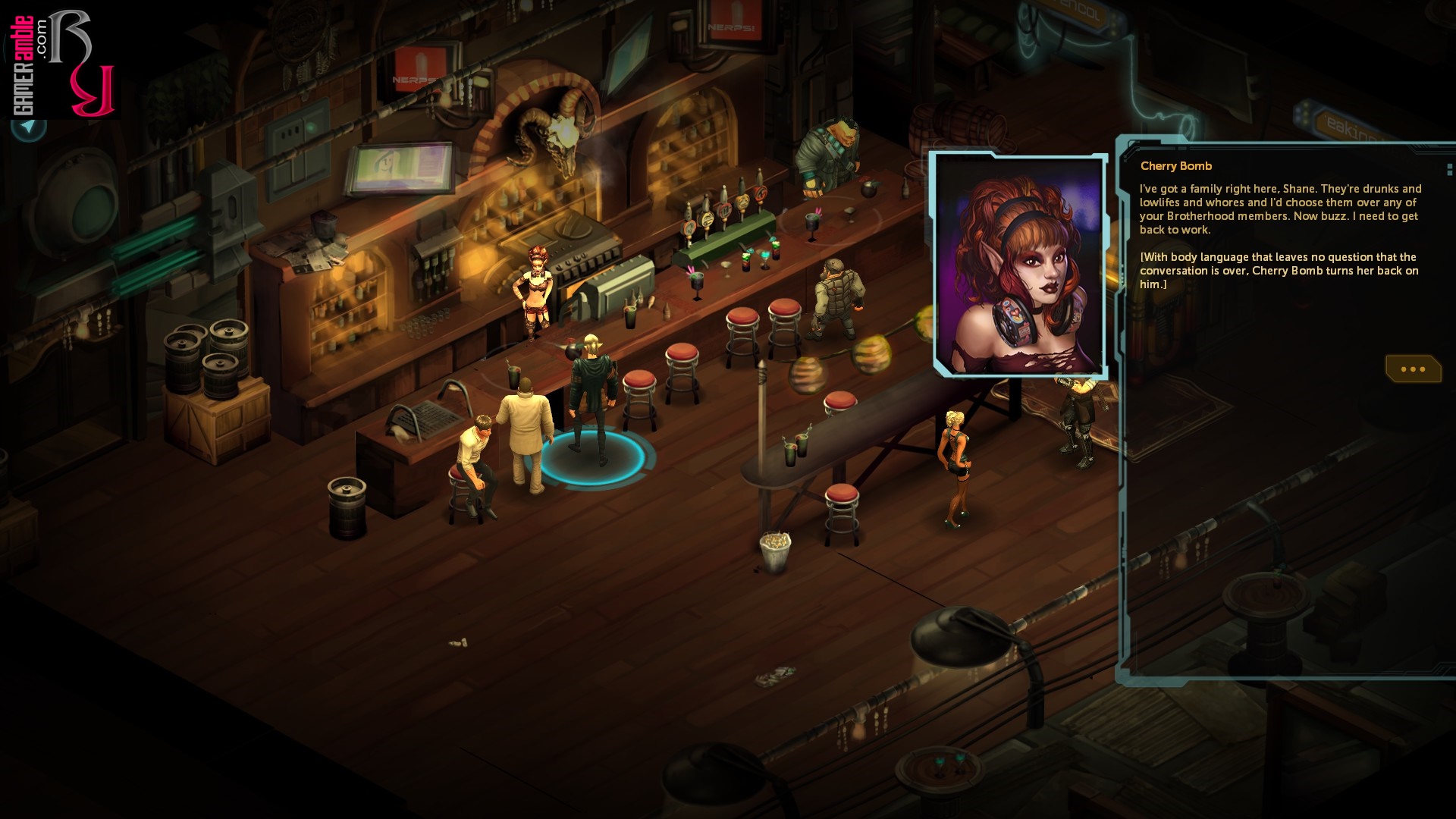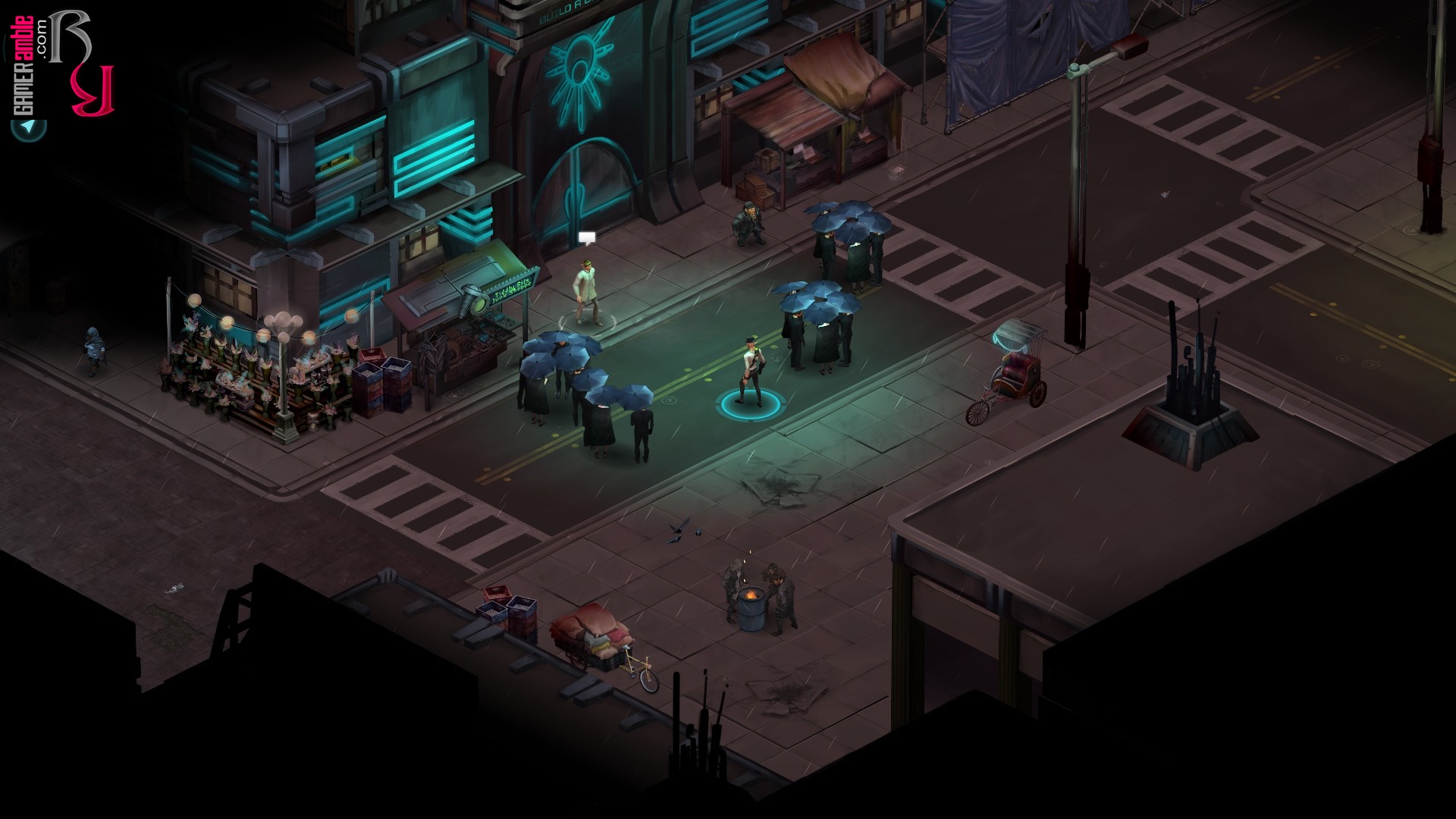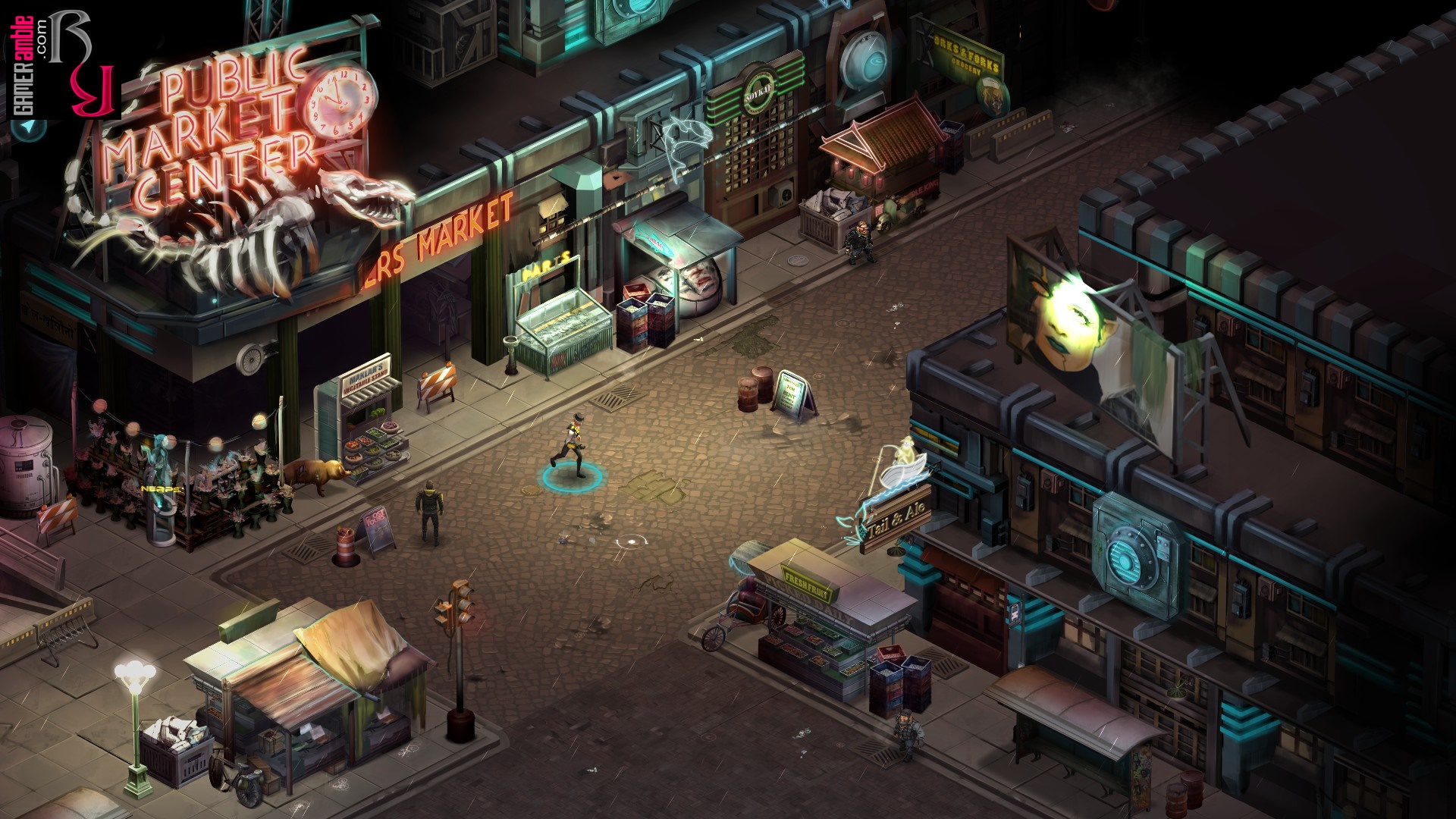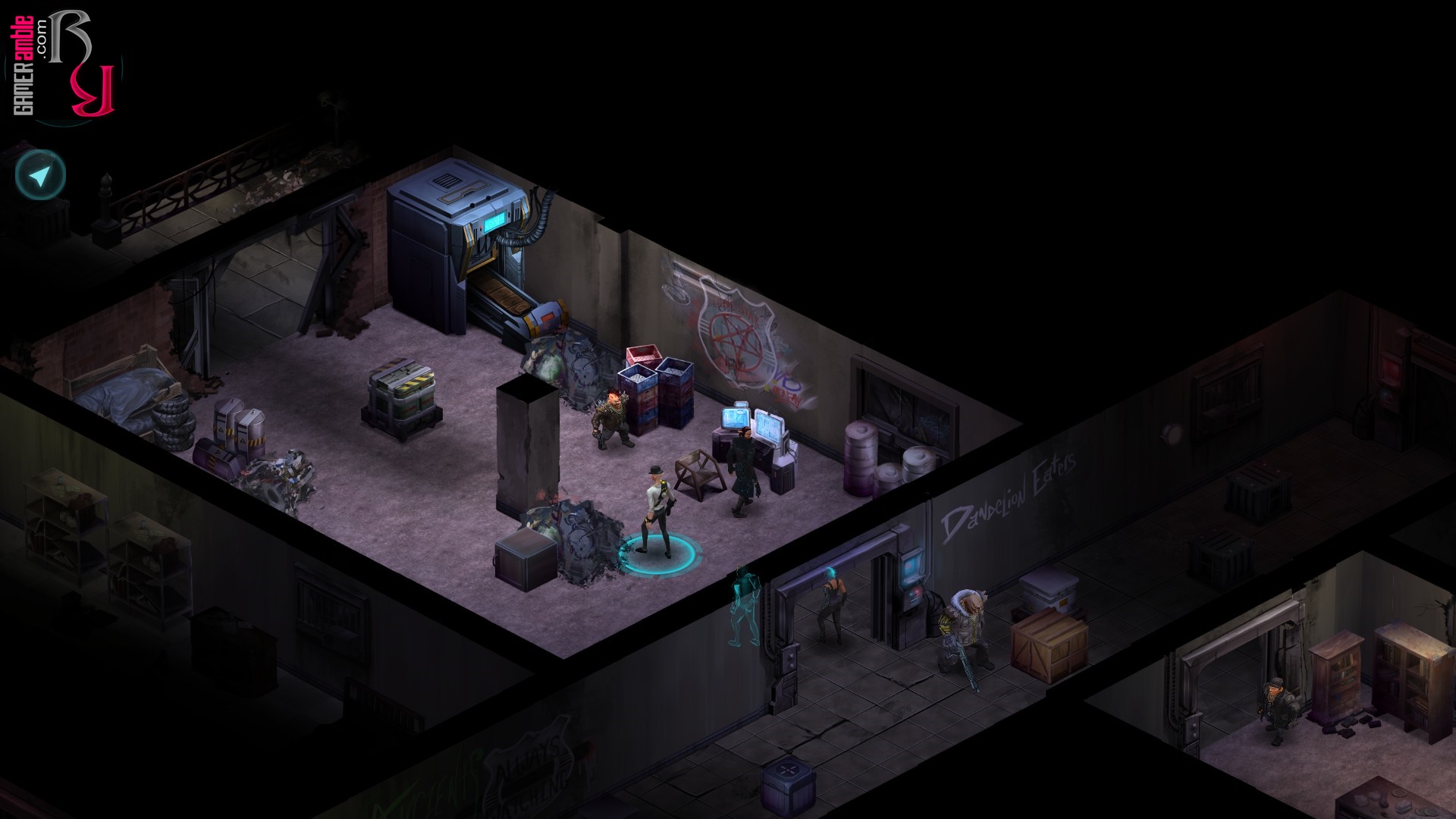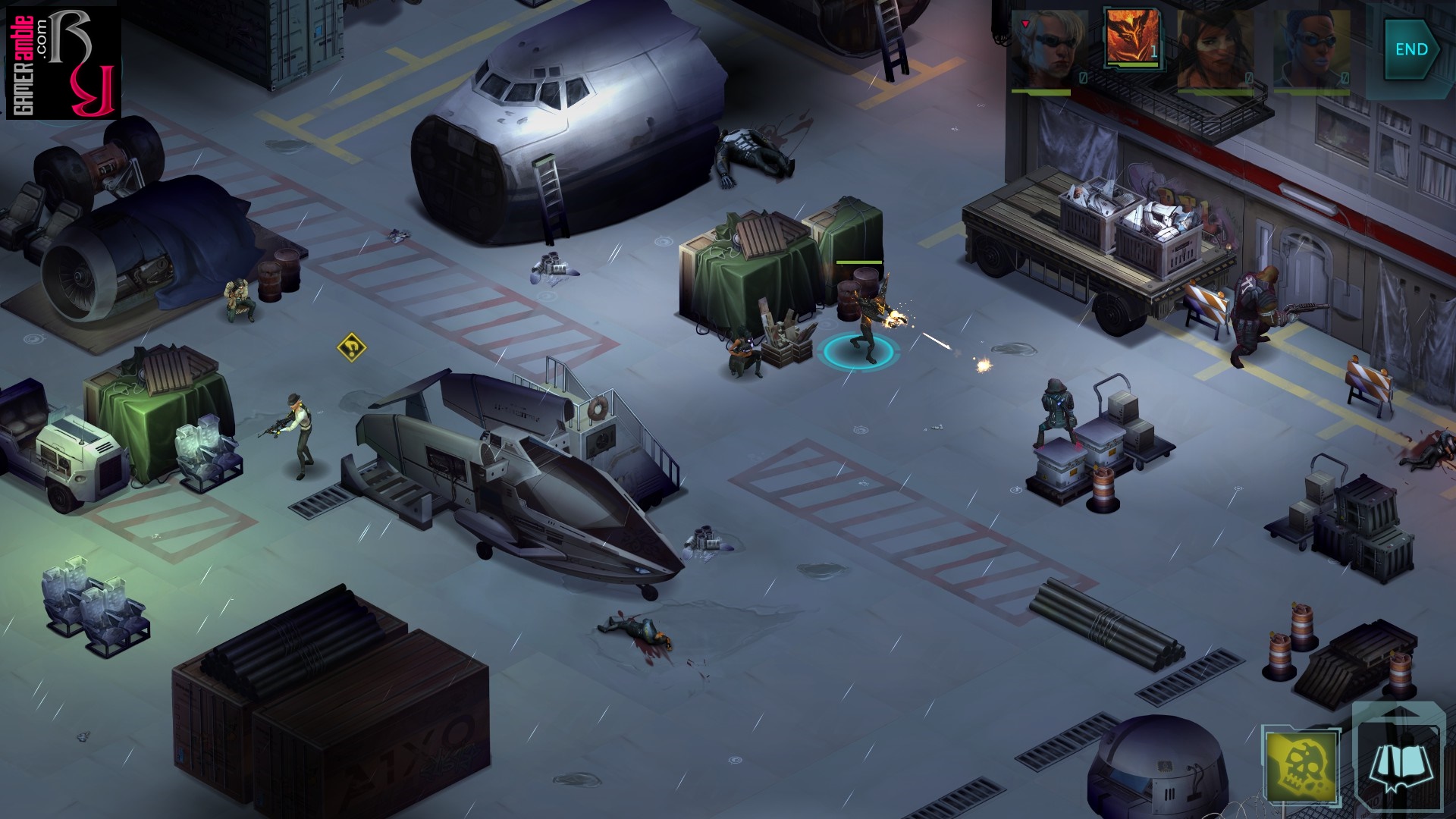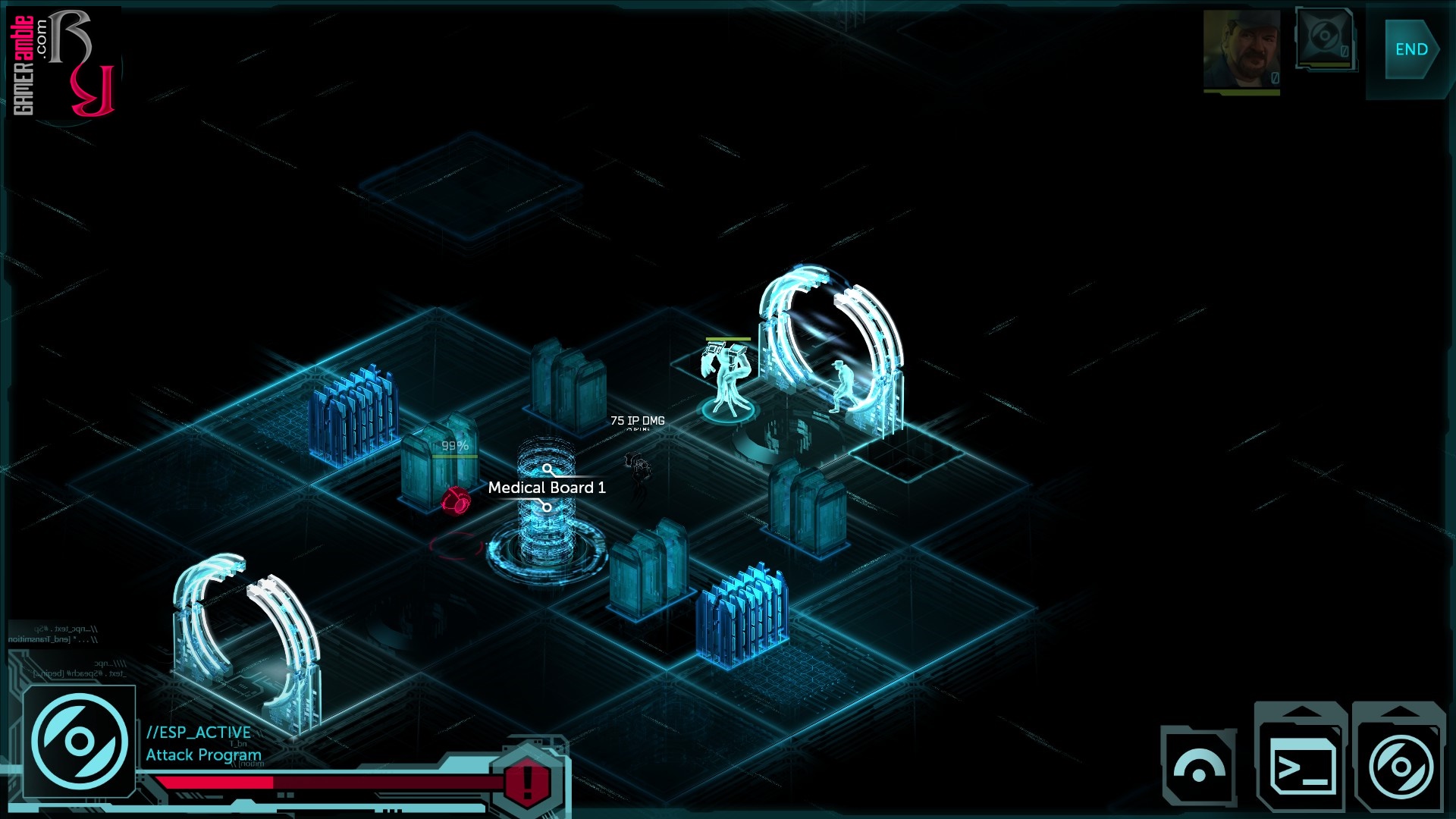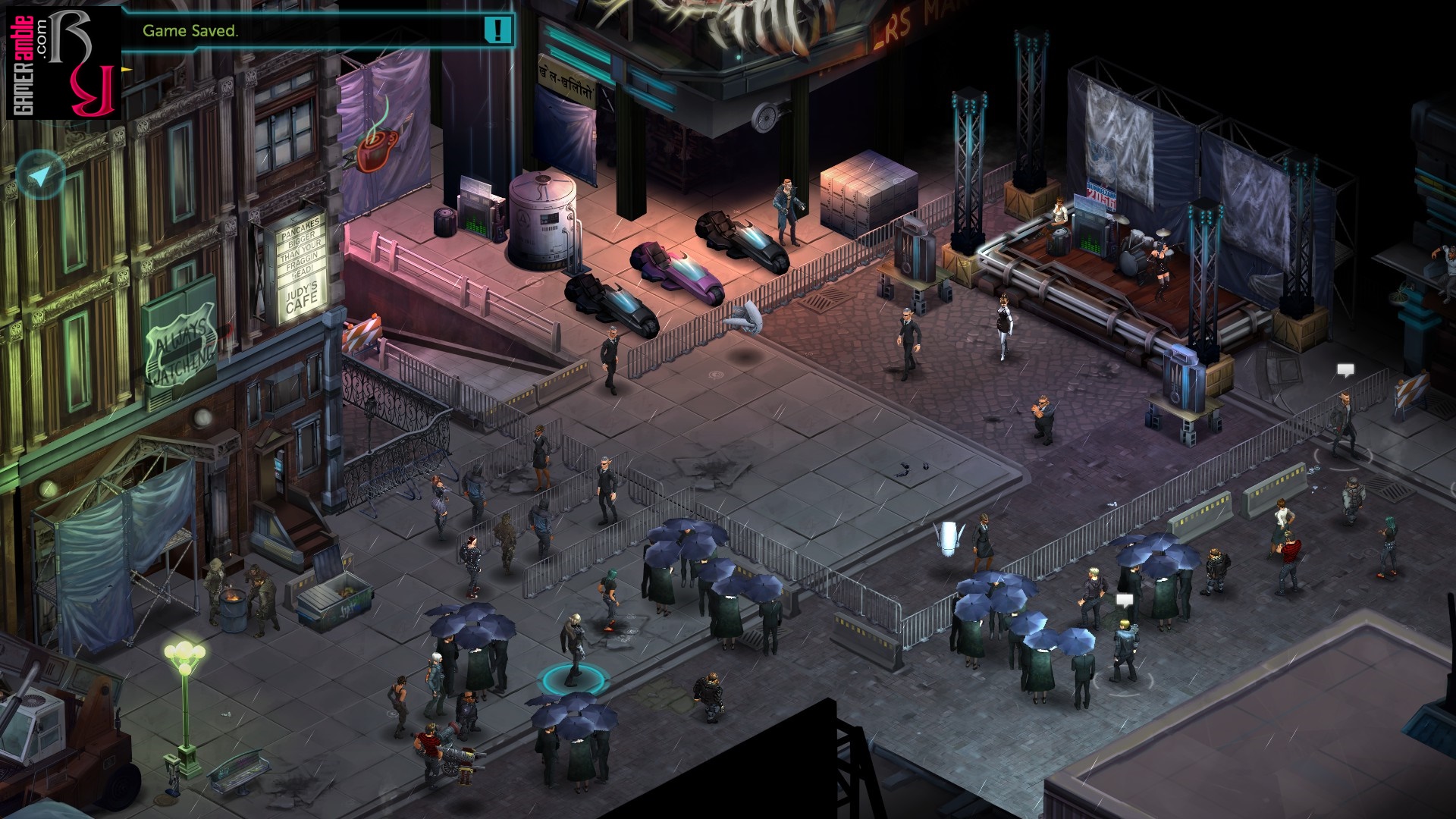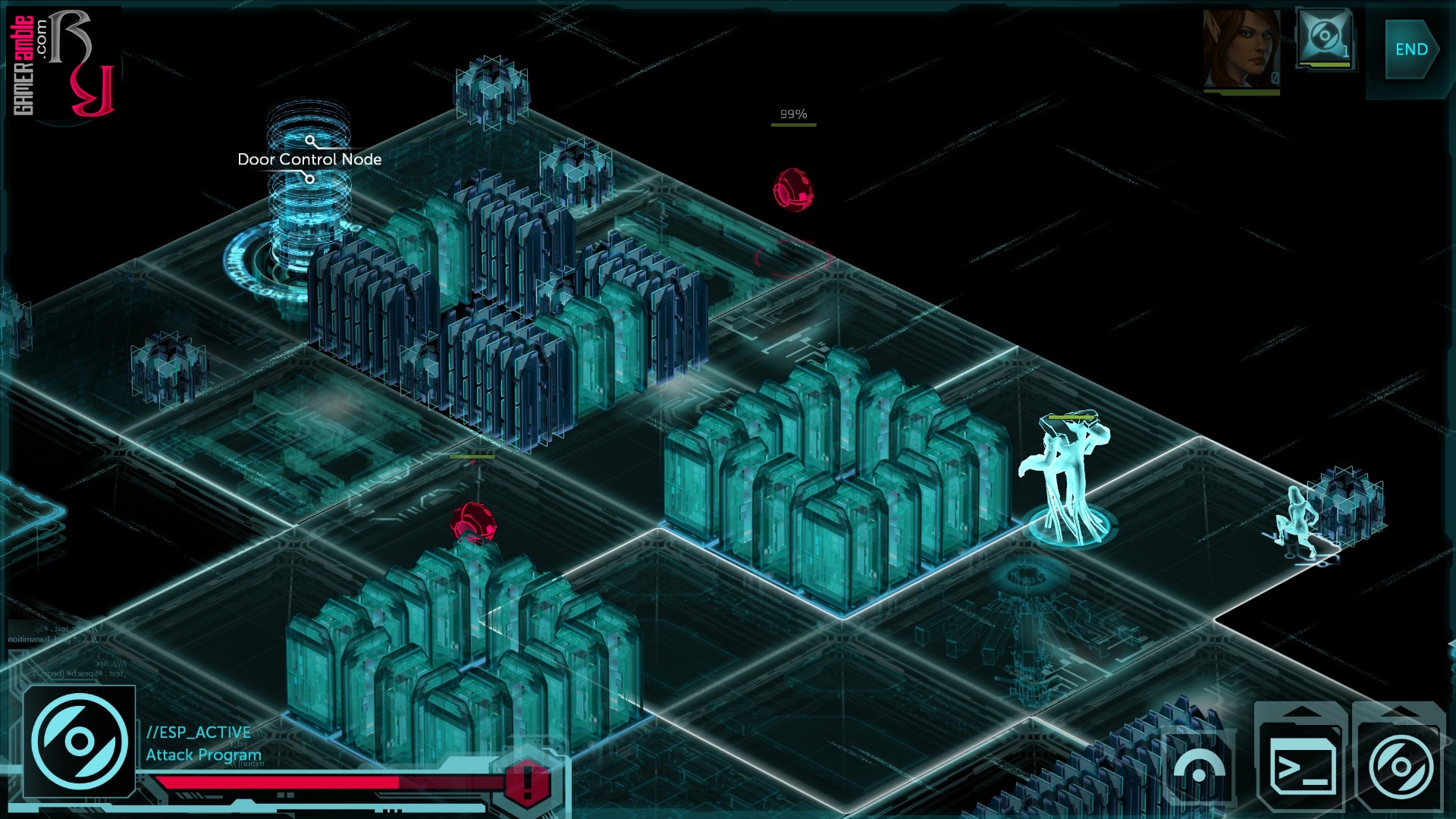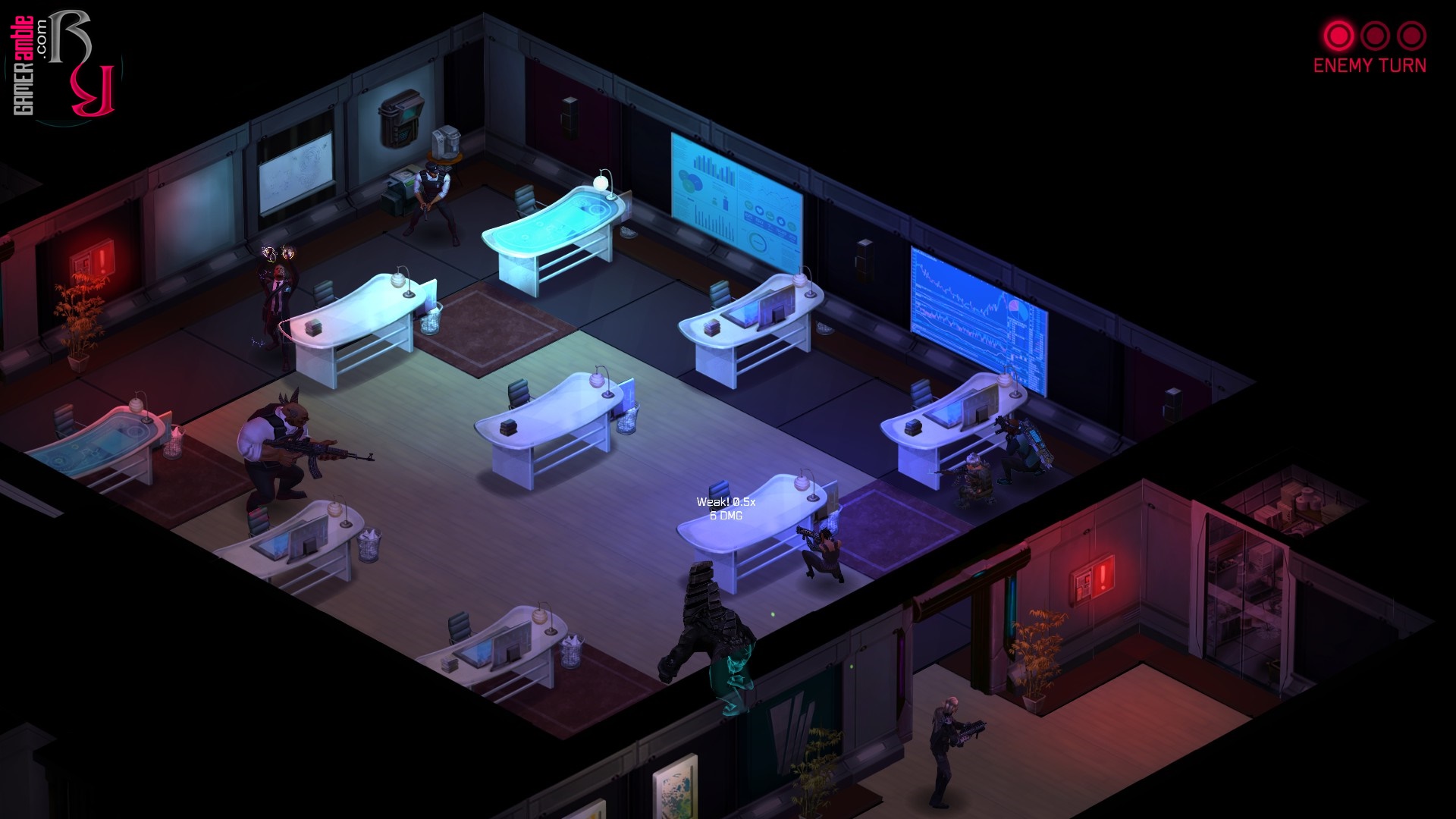Shadowrun Returns
Developer: Harebrained Schemes | Publisher: Paradox Interactive | Release Date: 2013 | Genre: RPG / Strategy / Indie | Website: Official Website | Purchase: Steam
With its cyberpunk, science-fiction meets fantasy world, one would think the Shadowrun license is ideally suited for computer role-playing games. Yet, since its inception as a tabletop role-playing game in the late eighties, the best games to take advantage of its rich world and characters were 16-bit console titles. It wasn’t until 2007 that PC owners got a taste of the license, and even that was in the form of a multiplayer-only online shooter. However, thanks to Kickstarter, an actual Shadowrun role-playing game finally made its way to PC with the creator of the tabletop RPG at the helm, no less. The overwhelming success of the Kickstarter campaign showed just how eager fans were for a PC release, but can Shadowrun Returns live up to the hype?
The game opens with your character, a down-on-their-luck Shadowrunner, receiving a pre-recorded message from an old acquaintance named Sam Watts. It turns out that Sam has died, which is what triggered the message requesting you to find the killer and bring them to justice. Sam promises a lot of money for your efforts, so you pack your bags and head to Seattle to figure out what is going on. It’s supposed to be a relatively simple job, but you soon discover more happening there than meets the eye. Not only is an organ-harvesting serial killer on the loose but there is also a creepy cult busy recruiting the disenfranchised. In this setting, you have to get justice for Sam, but whether you do it out of loyalty to an old friend or for the stack of credits is up to you.
Although the game is titled Shadowrun Returns, the primary campaign is actually called “Dead Man’s Switch.” This is because the developers have included a full-fledged editor with the game in the hope that players will create more content themselves. We didn’t spend too much time messing around with the editor, but while it is not that easy to use, it is powerful enough to create something good if you put enough effort into it. As for the primary campaign, it is a nice introduction to the world of Shadowrun, but unfortunately, it is not without some issues. Players can choose to be a human, elf, dwarf, ork, or troll, and each of these has their own racial bonuses when it comes to stats. There are also six character classes on offer: Street Samurai, Mage, Decker, Shaman, Rigger, and Physical Adept. Your character class will determine whether your character is good at shooting people from a distance, like getting in enemies’ faces with a sword, prefers drones to do your dirty work for them, and so on.
Some classes, such as the Decker, also specialize in technology, allowing them to jack into the “Matrix,” the virtual world of Shadowrun. In contrast, there are magic users who can use spells or summon spirits to do their bidding. No matter which class you pick, you earn karma for your actions, which can be used to improve your skills. The game doesn’t restrict you in this regard, so you are free to distribute your skill points as you like. However, it is far better to specialize in the stuff that your character is good at than trying to be a jack of all trades. The game is relatively short by RPG standards, so you will struggle to reach your true potential if you spread your skills too thin.
As you explore Seattle for clues about Sam’s murder, you will encounter a host of other characters. Some are only useful for providing information, while others will take a more active interest in you and even join your party for specific jobs. You can have up to three other characters in your party, provided you have enough cash to hire them. It’s disappointing that apart from one or two party members who have their own personality and backstory, the rest are just pawns to move around the board. The Shadowrun universe has plenty of lore to draw from for its characters, so it is a pity that selecting party members often comes down to picking whatever class you need for the job from a list of random portraits.
It’s been a long time since we played Shadowrun on the Sega Genesis, but one thing that we remember about that game is how open it felt. Surprisingly, Shadowrun Returns actually feels a lot more restrictive as the game is quite linear, and there is minimal scope for exploration. The game does have a hub area where you can talk to people, buy new equipment, stock up on healing items, and sometimes take on side jobs, but generally, once you are done with an area, there is no turning back. Looking in every nook and cranny of each area might reward you with an extra healing item or grenade, but the odds of stumbling across something radically new or different are very low. The same goes for stats and skills that can influence dialogue options. During the dialogue, you generally have plenty of options to choose from, but the ones that require specific stats or skills are grayed out. Unfortunately, even if you can choose from one of these unique responses, they generally do not alter the story or outcomes in any significant way. Sometimes, access to the correct dialogue option could get you to specific areas faster, but an alternative solution is usually nearby. It also doesn’t help that the cast of characters that you can talk to in this game isn’t that large.
We spent a lot of time in the Sega Shadowrun game just hacking into the Matrix for fun and profit, but in Shadowrun Returns, you’ll only have access to this virtual world during specific missions. Even then, if your main character is not a decker, you can simply hire one for the mission and use them instead. The first character class we tried out for our main character in this game was the shaman, which allowed us to summon elemental spirits during battles. To do so, we needed consumable items in our inventory or to find unique spots in the environment. After summoning a spirit, you can control them in battle, but the chances of them breaking free and turning on you are increased each round. Unfortunately, this often meant that it was safer to stick to guns when eliminating enemies. The combat sections are turn-based, and each character has a pool of “Action Points” from which to draw. These points determine how far you can move around the combat area and are also used for things like shooting, reloading, throwing grenades, and casting spells. Ammunition is unlimited, but reloading requires AP, and some spells or abilities have cooldowns. Characters can also carry up to three weapons you can switch between without sacrificing AP. The combat system is decent, and some strategy is involved, like taking cover behind objects for a defense bonus. You’ll also want to watch where you shoot with a shotgun, as you can hit your own allies if you are not careful. The Matrix sections are separate from reality, so while your team is busy fighting security, you might also have to navigate your Decker through a completely different virtual world where they have to battle defense systems and activate nodes. While in the Matrix, their physical bodies are still vulnerable in the real world, which may require the rest of your team to prevent them from getting shot up before they can complete their objective and beat a hasty retreat.
Shadowrun Returns is not a bad-looking game and makes use of hand-painted 2D artwork for its atmospheric backgrounds. The 2D character models also look great, although the character models are all 3D. This means the characters sometimes look out of place compared to the backgrounds. The action is viewed from an isometric overhead perspective, but while you can zoom in or out to a limited degree, it is impossible to rotate the camera. The game also doesn’t feature cutscenes and instead displays a lot of text on the loading screens to describe what you will be up against. In general, there is a lot of reading in the game, as it does not feature any voice acting. Thankfully, the writing in the game is quite good and always interesting. The soundtrack is excellent and consists of a nice mix of synths and guitars. The sound effects are generally also good, especially the weapons, as they all sound loud and dangerous.
The interface in Shadowrun Returns is very simple and straightforward, as you can use your mouse to do everything. The game also has multiple difficulty settings, and since it was released, the ability to save or load anywhere has been added. It is pretty disappointing that there is so little loot in the game, and we finished the whole story with one of the earliest guns we have bought equipped. We know that Shadowrun Returns is not a loot-based action RPG, but the option to plunder some of the corporate locations for extra loot to sell would have been a nice touch. The small inventory of your character and the limited number of outfits also saps some of the depth from the game. Even aspects such as the ability to use cybernetic implants, which can be detrimental to magic users, don’t feel as fleshed out as we would have liked.
Overall, Shadowrun Returns is a nice introduction to the unique license, but it does feel like it was designed with a broad audience in mind and not hardcore fans. This makes sense from a financial perspective but can be disappointing to everyone who enjoys the depth and complexity that the license can deliver. Still, the inclusion of the editor does mean that dedicated fans should be able to come up with something interesting themselves. In total, it took us about 12 hours to complete the primary campaign, which is relatively short by RPG standards. Because the story is so linear and character classes make little difference, there is also little incentive to do it all again. Hopefully, future campaigns in the Shadowrun universe will add a bit more depth and complexity.
System Requirements
- Minimum PC System Requirements
- Minimum Mac OS X System Requirements
- Minimum SteamOS + Linux System Requirements
- OS:Windows XP SP3/Vista/Windows 7
- Processor: x86-compatible 1.4GHz or faster processor
- Memory:2 GB RAM
- Graphics:DirectX compatible 3D graphics card with at least 256MB of addressable memory
- DirectX®:9.0
- Hard Drive:2 GB HD space
- OS:OSX 10.6
- Processor:Intel-based Macs only (x86-compatible, 1.4GHz or better)
- Memory:2 GB RAM
- Hard disk space:2 GB HD space
- Processor: x86-compatible 1.4GHz or faster processor
- Memory:2 GB RAM
- Graphics:Modern 3D graphics card with at least 256MB of addressable memory
- Hard Drive:2 GB HD space

